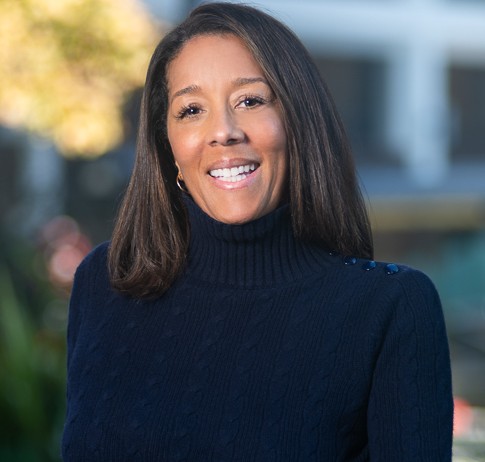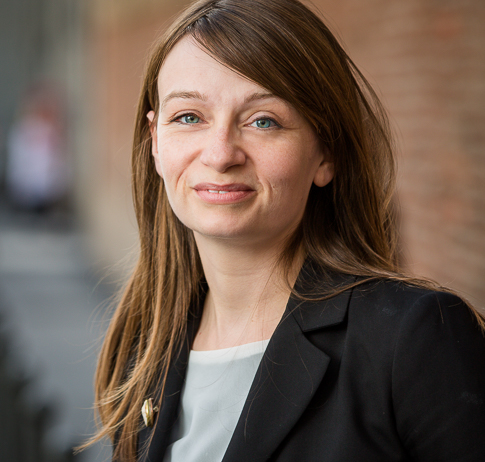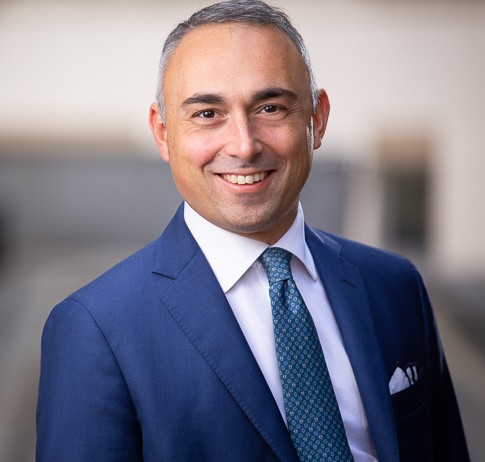Article
Fashion Rethinkers: How Felder Felder pioneered haute ecouture
8 November 2023 | 6 minute read
As part of our Rethinkers series, Withers is speaking to founders and creatives who are looking past the “greenwashing” hype to challenge the fundamentals of the global fashion and textiles industry. In this article, we meet two designers who have jettisoned London Fashion Week shows to create their own, more sustainable business model.
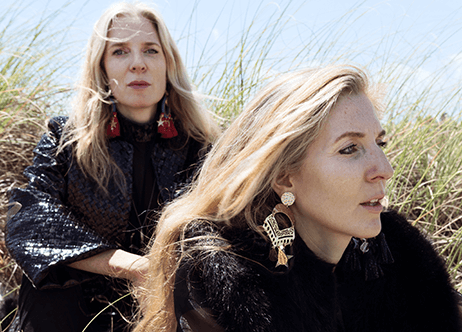
Annette and Daniela Felder watched The True Cost, a documentary about the fashion industry’s impact on the world, separately. But the identical twins, who co-founded the Felder Felder fashion brand, had exactly the same response.
“We both said, oh my God, we are part of the problem!” says Daniela. “We weren’t a fast-fashion brand. We were not doing massive quantities. Until that moment, we truly didn’t think we were doing anything bad. But the film really opened our eyes.”
Immediately, the Felders began to rethink the luxury brand they had conceived while students at Central Saint Martins in London, winning immediate attention on the global fashion scene. They admired British designers such as Stella McCartney, who has always avoided using animal products, and Vivienne Westwood, who shunned plastics in favour of recycled materials, and began to consider how to take Felder Felder in a more ethical and sustainable direction. “It was always our ambition to communicate through beauty and creativity. Now we decided that we needed to create solutions,” says Annette.
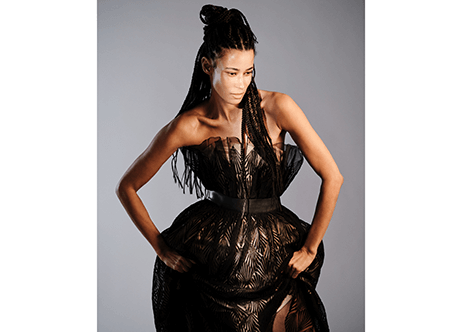
A natural first step, given they had been vegetarian since their teenage years in Germany, was to stop using animal products in their collections. After talking to others in sustainable fashion – a small world at the time – they began to use greener materials and techniques, eventually deciding to rethink their whole mode of creation. “At some point we realised that the business model we had at the time did not make sense,” recalls Annette. “We wanted to make a bigger change to feel that our work was aligned with our values.”
This was how Felder Felder came to pioneer a new, sustainable business model for fashion. The designers rethought all their traditional practices, gave up producing seasonal collections and wholesaling products, and focused instead on innovative new materials to create what they call “ecouture”.
It was a bold departure. Despite public commitments by high-end and high-street labels to reduce the industry’s impact on the planet, the industry makes money by encouraging consumers to buy into new trends every season. Suddenly, the sisters found themselves on the fringe of the industry: contacts were reluctant to consider working in a different way, and they were also struggling to find eco-friendly textiles on the market.
At some point we realised that the business model we had at the time did not make sense,” recalls Annette. “We wanted to make a bigger change to feel that our work was aligned with our values."
“What really excites us is innovation, but there weren’t that many in the beginning,” says Daniela. “That was a challenge coming from a high-end luxury background, so at first we used upcycling, reusing materials that were already around.”
Gradually, however, the landscape has been shifting. A rise in veganism, growing awareness of the climate emergency and the UN’s announcement of its Sustainable Development Goals encouraged consumers and companies to consider fashion more mindfully. In the past five years, brands including BMW and Soho House have begun lining up to work with Felder Felder who now have a wider range of sustainable materials available to work with. “As more plant-based leather alternatives started coming on to the market, we were inspired to use the material almost speculatively – to show what is going to be possible in the future of fashion. These materials are so new . . . but they will eventually have a huge positive impact on the industry,” says Daniela.

Gina Bibby, an intellectual property and technology partner who leads Withers’ global fashion technology practice, agrees. “There is much more focus on sustainability of all kinds in the fashion industry and we believe this focus will continue because consumers increasingly demand sustainable alternatives,” she comments. “High-end brands like Felder Felder are trailblazers whose work motivates many other brands to adopt sustainable practices and use sustainable materials like vegan leathers and the like.”
Among the first plant-based products to emerge was Piñatex, created by Carmen Hijosa – a Spanish designer who had been a consultant in the leather goods industry in the 1990s. Seeking a higher-quality leather alternative than cheap, petroleum-based textiles, Hijosa developed Piñatex using fibres from pineapple leaves, an agricultural byproduct. Her leather-like vegan product has been used in Hugo Boss trainers and Ally Capellino bags.
Early in their journey, the Felders report that Piñatex was one of relatively few textiles that worked for a high-end luxury brand. “But in the past five years it has snowballed and now there are so many. People are making plant-based leathers from mango, seaweed, mycelium, which comes from mushrooms… there’s a lot of innovation happening,” says Annette.
High-end brands like Felder Felder are trailblazers whose work motivates many other brands to adopt sustainable practices and use sustainable materials like vegan leathers and the like.
Some sustainable materials are, of course, still new, which makes using them less intuitive. In particular, brands need to educate themselves about the advantages and limitations of such materials and learn how to properly use them. The Felder Felder designers view themselves as doing R&D for the wider industry: “When customers wear our dresses, they are showcasing what is possible,” explains Daniela. “We are also keeping a close eye on how these materials will behave in five, fifteen or twenty years’ time.”
While some materials are unchanged after five or six years, there are others that deteriorated so quickly, they never left the workshop – a costly experience that Daniela describes as “heartbreaking.” On the upside, the brand’s mixture of fashion credibility and sustainability has won it many fans, including A-listers such as Gwyneth Paltrow, who showed off a Felder Felder jacket on the red carpet; Rihanna, who wore an upcycled look onstage; and Florence Welch, who commissioned an ethereal white dress for a Florence and the Machine performance.
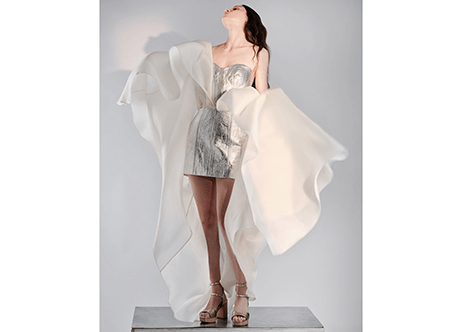
The Felder sisters even suggest that the constraints of using eco-friendly materials have encouraged them to be more creative in their designs, coming up with pieces they would never otherwise have imagined. “You are kind of collaborating with the material, which becomes a partner in the design process,” remarks Annette. “A lot of eco-friendly materials don’t come in linear rolls, it’s these little sheets, so you think, OK, what can I do with five 30cm by 40cm sheets?
As an example, the pair point to a gender-neutral cape they made from Mirum, a new, leather-like plant-based material that is completely petroleum-free. The Felder sisters embraced the large, square shapes of the panels it arrived in to create a striking, geometric garment with an open back. “For us, it’s very much a collaborative way of working. We receive the material and see what we can do with it, rather than getting really fixated on the way something has to look and sourcing materials for it,” says Daniela.
This more mindful mode of production has, the sisters say, made them happier because they now feel their work goes “beyond just clothes.” It has also been a joy to see the wider industry adopting some of the materials and practices they have pioneered. “Even as teenage vegetarians in rural Germany, we would campaign to raise awareness around the cruelty within the meat industry,” says Annette. “We have never bought into the idea that one person can’t make a difference. It’s about living by example, so that one becomes two, two becomes four, and so on. That has stayed with us throughout our lives.”The Global Rethinkers
We're getting behind the innovators in fashion, beauty and retail. Check out our hub to find out more.
